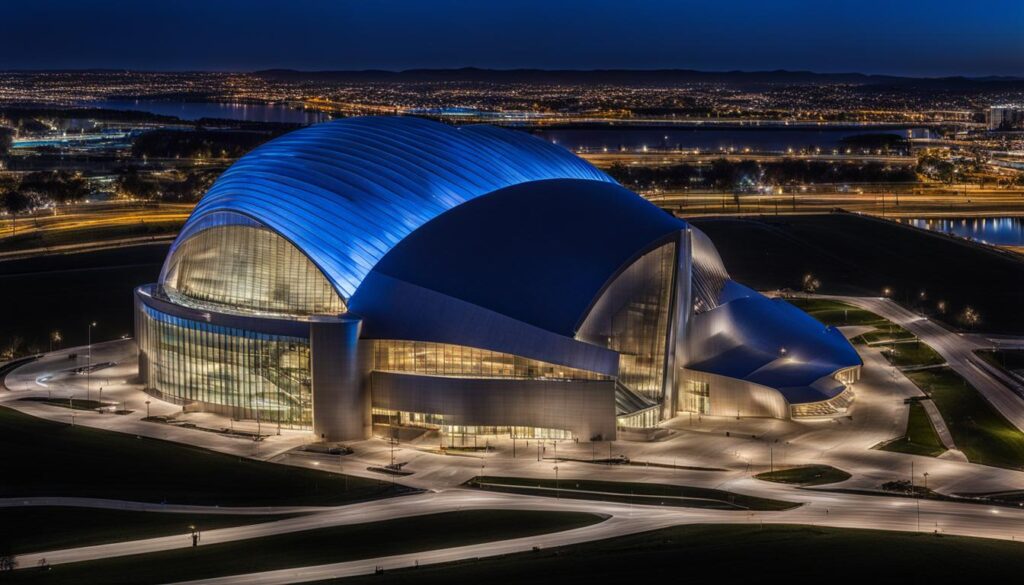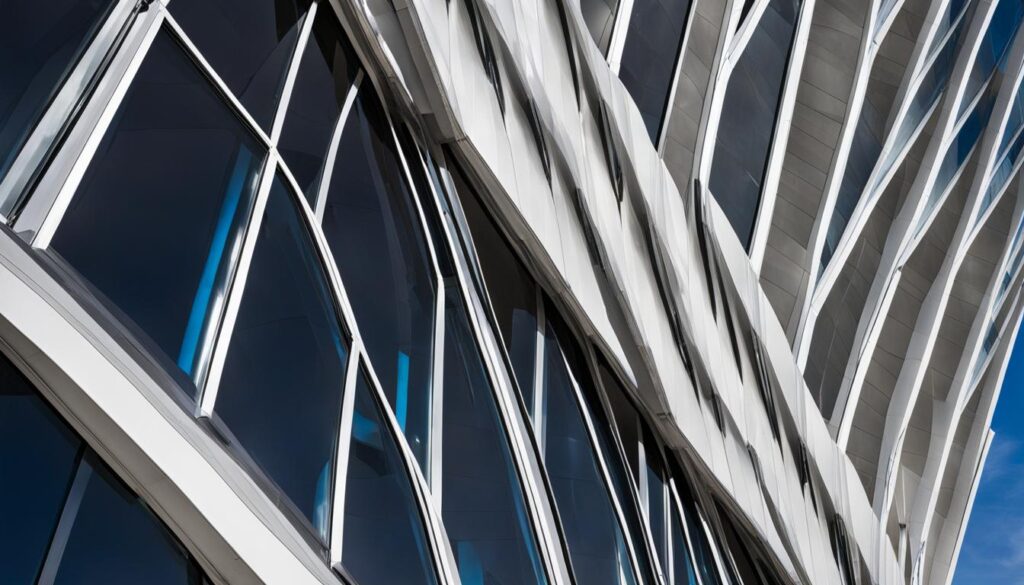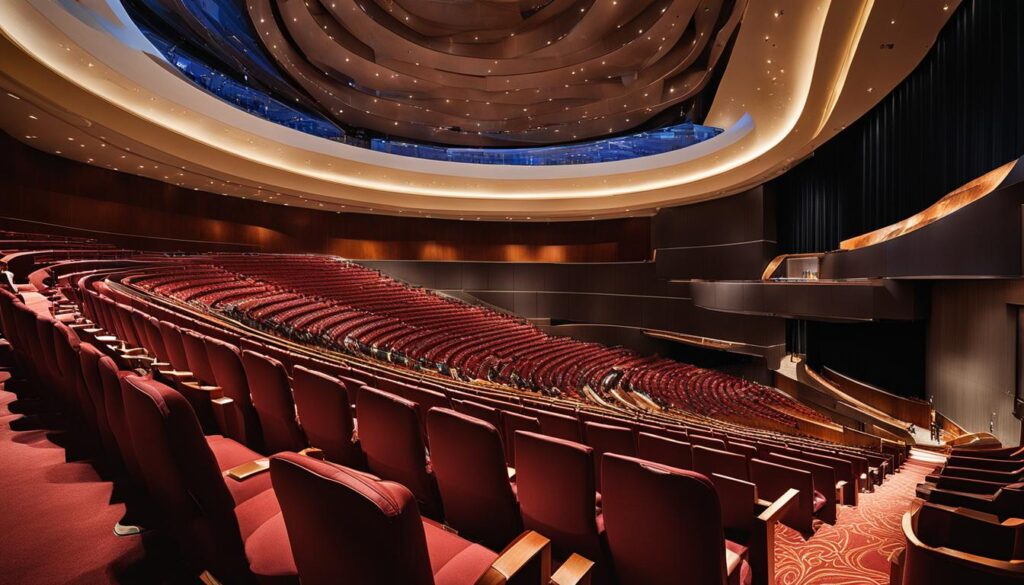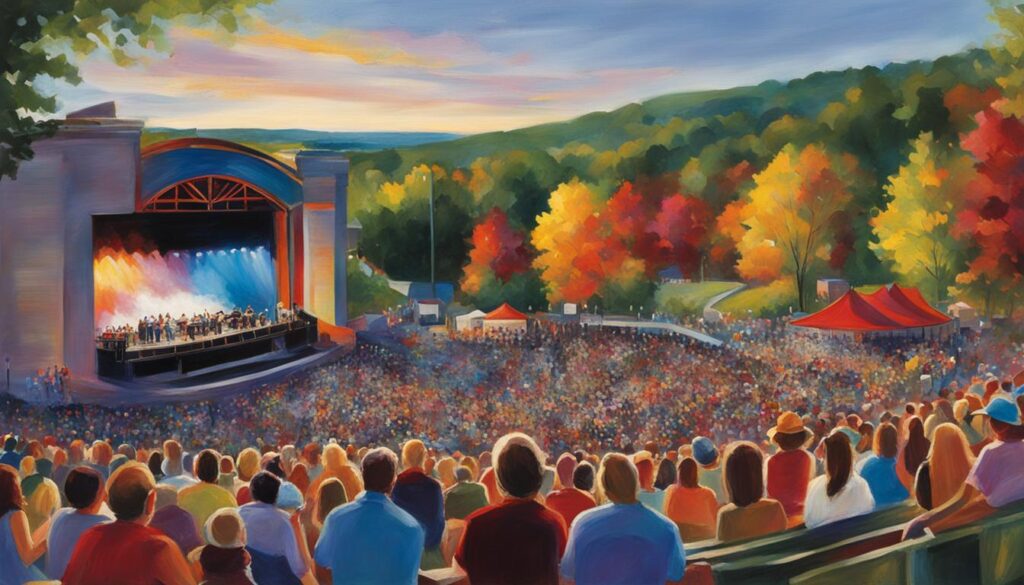When it comes to the Kansas City Performing Arts Center, the question of who designed this magnificent architectural marvel often arises. As a journalist with a keen interest in the arts, architecture, and urban development, I embarked on a quest to uncover the creative minds behind this iconic cultural center.
My research led me to the renowned architect, Moshe Safdie, who was the visionary behind the design of the Kansas City Performing Arts Center. Safdie’s expertise in creating awe-inspiring structures that blend seamlessly with their surroundings made him the perfect choice for this ambitious project.
Safdie, along with a team of talented designers from Safdie Architects and BNIM, collaborated closely with engineers and acousticians to bring the Kansas City Performing Arts Center to life. Their combined expertise ensured that every aspect of the center’s design, from its striking exterior to its acoustically impeccable performance venues, was meticulously crafted.
The construction of the Kansas City Performing Arts Center was a monumental undertaking that spanned several years. The dedication and commitment of the project team, along with the support of the local community, made this ambitious vision a reality.
Key Takeaways:
- The Kansas City Performing Arts Center was designed by renowned architect Moshe Safdie.
- Safdie Architects and BNIM were among the design firms involved in the project.
- The center’s construction was a collaborative effort that did not receive taxpayer funds.
- The Kansas City Performing Arts Center is a cultural landmark in the city, serving as the performance home for multiple arts organizations.
- Its unique architecture and design make it an iconic building in Kansas City’s urban landscape.
The Construction and Origins of the Kauffman Center
When it comes to Kansas City’s arts scene, the Kauffman Center for the Performing Arts stands out as a remarkable venue that has become an iconic symbol of the city. The construction of this architectural masterpiece was not a simple endeavor but a result of meticulous planning, feasibility studies, and careful selection of design professionals.
The journey of the Kauffman Center began in 1994 with a vision shared by Muriel Kauffman, who passionately believed in the transformative power of the arts. After her passing, her daughter Julia Irene Kauffman took on the responsibility of turning this dream into reality. A feasibility study was conducted in 1997, which paved the way for the selection of the renowned architect Moshe Safdie to lead the project.
Construction began in October 2006 and lasted for nearly five years. The building’s unique design, inspired by Safdie’s sketch on a napkin during a dinner with Julia Irene Kauffman, features two symmetrical, shell-like forms that house the performance venues. This distinctive architecture not only adds to the aesthetic appeal of the center but also contributes to its acoustic excellence, creating an immersive experience for both performers and audience members.
In the construction of the Kauffman Center, every detail was carefully considered, from the selection of materials to the planning of space. The result is a world-class arts venue that has become a beacon of cultural enrichment in Kansas City.


The Origins of the Kauffman Center
“The idea for the Kauffman Center for the Performing Arts first originated in 1994 when Muriel Kauffman discussed her vision with her family and the community.”
The Construction Process
The construction process of the Kauffman Center was an intricate undertaking that required a dedicated team of professionals and years of meticulous planning. It started in October 2006 and lasted for nearly five years, finally opening its doors to the public on September 16, 2011. Throughout this process, the center became a significant catalyst for the urban redevelopment of downtown Kansas City, Missouri, and a testament to the city’s commitment to the arts.
| Year | Construction Milestones |
|---|---|
| 1994 | Initial vision shared by Muriel Kauffman |
| 1997 | Feasibility study conducted |
| 2006 | Construction begins |
| 2011 | Kauffman Center opens to the public |
- Muriel Kauffman discusses her vision
- Feasibility study conducted
- Architect Moshe Safdie selected
- Construction commences
- Kauffman Center opens
Through the collaboration of visionary minds, the Kauffman Center for the Performing Arts became a reality. Its construction and design are a testament to the significance of the arts and culture in the urban landscape, making it an iconic Kansas City landmark.
Architecture and Design of the Kauffman Center
The Kauffman Center for the Performing Arts is an architectural masterpiece that showcases innovative design and thoughtful craftsmanship. The center’s striking glass façade, stainless steel exterior, and curved shapes create a visually stunning structure that stands out in the Kansas City skyline.
The center features two remarkable performance venues – the Muriel Kauffman Theatre and Helzberg Hall. The Muriel Kauffman Theatre is designed in the style of European opera houses and offers a grand experience with multiple balconies, box seating, and a spacious 5,000-square-foot stage. The exquisite architectural details, such as the ornate ceiling and intricate moldings, enhance the overall aesthetic appeal of the theater.
Helzberg Hall, on the other hand, is a true gem with its oval-shaped design, allowing for an intimate and immersive concert experience. The vineyard-style seating arrangement ensures exceptional acoustics and optimal views from every seat. The stage extends into the hall, creating a harmonious connection between the performers and the audience. This unique architectural feature enhances the overall acoustics and creates a captivating atmosphere for musical performances.
The Kauffman Center also includes the Brandmeyer Great Hall, a spacious lobby area that serves as a gathering space for visitors and patrons. The Brandmeyer Great Hall offers a breathtaking view of the Kansas City skyline, providing a scenic backdrop for socializing and admiring the beauty of the surrounding cityscape.


Architectural Features
| Feature | Description |
|---|---|
| Glass Façade | The center’s glass façade allows natural light to illuminate the interior spaces and offers panoramic views of Kansas City. |
| Stainless Steel Exterior | The sleek and modern stainless steel exterior adds a contemporary touch to the overall design of the center. |
| Curved Shapes | The center’s curved shapes create a sense of fluidity and movement, making it an architectural marvel. |
Performance Venues
- Muriel Kauffman Theatre – Inspired by European opera houses, the theater offers a grand stage and multiple seating options.
- Helzberg Hall – With its oval-shaped design and vineyard-style seating, the hall provides an immersive concert experience.
- Brandmeyer Great Hall – A spacious lobby area with a view of the Kansas City skyline, perfect for socializing and enjoying the ambiance of the center.
The Kauffman Center for the Performing Arts is not only a testament to exceptional architectural design but also a hub for world-class performances and cultural enrichment. It continues to captivate audiences with its stunning architecture and serves as a beacon of artistic excellence in Kansas City.
Partnerships and Education at the Kauffman Center
The Kauffman Center for the Performing Arts is dedicated to fostering strong partnerships with local and regional organizations, working together to enrich the cultural life of the Kansas City community. By collaborating with these organizations, the center aims to bring diverse performances, educational programs, and community engagement initiatives to the forefront, ensuring that the arts are accessible to all.
Through its partnerships, the Kauffman Center has established meaningful connections with esteemed local organizations such as the Kansas City Friends of Alvin Ailey, the Kansas City Symphony, and the University of Missouri – Kansas City Conservatory of Music and Dance. These collaborations not only provide opportunities for exceptional performances but also create platforms for exchanging artistic ideas and cultivating talent.
In addition to its community partnerships, the Kauffman Center is committed to nurturing creativity and artistic growth through its education programs. By offering a wide range of workshops, masterclasses, and performances, the center strives to inspire and educate the next generation of artists and arts enthusiasts. These programs provide valuable learning experiences and serve as a stepping stone for aspiring individuals in the arts industry.
Education Programs
The Kauffman Center’s education programs cater to students of all ages and backgrounds. From interactive workshops for young children to specialized training for aspiring professionals, the center offers a variety of experiences designed to ignite curiosity and foster artistic expression. By connecting students with professional artists, educators, and industry experts, the Kauffman Center creates an environment where creativity can thrive.
Cultural Enrichment
At its core, the Kauffman Center for the Performing Arts is dedicated to cultural enrichment. By collaborating with local and regional organizations, the center ensures that the arts have a significant impact on the community. Through performances, educational initiatives, and community engagement, the Kauffman Center strives to create a vibrant and inclusive cultural landscape in Kansas City.
Conclusion
The partnerships and education programs at the Kauffman Center for the Performing Arts are vital to its mission of enriching the cultural life of the Kansas City community. By working hand in hand with local organizations and providing educational opportunities, the center not only enhances the artistic experience but also nurtures a love for the arts in future generations. Through these collaborative efforts, the Kauffman Center continues to make a lasting impact on Kansas City’s cultural landscape, ensuring that the arts remain a cornerstone of the community.
Conclusion
The Kansas City Performing Arts Center, designed by renowned architect Moshe Safdie, is an architectural masterpiece that has had a significant cultural impact on the city. This iconic landmark has become synonymous with Kansas City’s identity and stands as a testament to the power of architecture in urban redevelopment.
Designed with a unique architectural style, the center’s glass façade, stainless steel exterior, and curved shapes create a visually stunning environment that captures the essence of the performing arts. The Muriel Kauffman Theatre, Helzberg Hall, and Brandmeyer Great Hall provide exceptional performance venues, offering immersive experiences for both artists and audiences alike.
Not only does the Kauffman Center serve as the performance home for renowned arts organizations such as the Kansas City Symphony, the Lyric Opera of Kansas City, and the Kansas City Ballet, but it also fosters partnerships with local and regional organizations to enrich the cultural life of the community. These collaborations provide opportunities for performances, educational programs, and community engagement, further enhancing the center’s cultural impact.
Through its diverse programming and educational initiatives, the Kauffman Center inspires and engages the community, fostering a love for the arts and nurturing the next generation of artists. This commitment to cultural enrichment has made the center a hub for creativity and artistic expression in Kansas City.
FAQ
Who designed the Kauffman Center for the Performing Arts?
The Kauffman Center was designed by renowned architect Moshe Safdie.
Did the Kauffman Center receive any taxpayer funds for its construction?
No, the center was created as a 501(c)(3) non-profit organization and did not receive any taxpayer funds for its construction.
How long did it take to complete the construction of the Kauffman Center?
The construction of the center started in October 2006 and took nearly five years to complete.
What are the performance venues at the Kauffman Center?
The Kauffman Center consists of two performance venues – the Muriel Kauffman Theatre and Helzberg Hall.
What is the architectural design of the Kauffman Center?
The center features a glass façade, stainless steel exterior, and unique curved shapes.
Does the Kauffman Center offer educational programs?
Yes, the center offers educational initiatives for students, including workshops, masterclasses, and performances.

